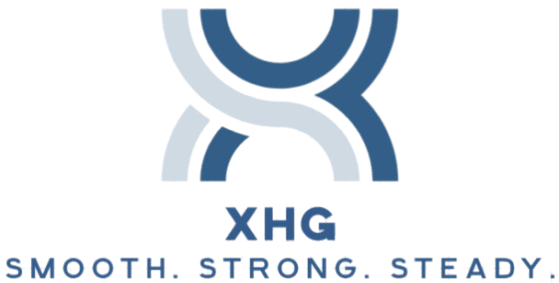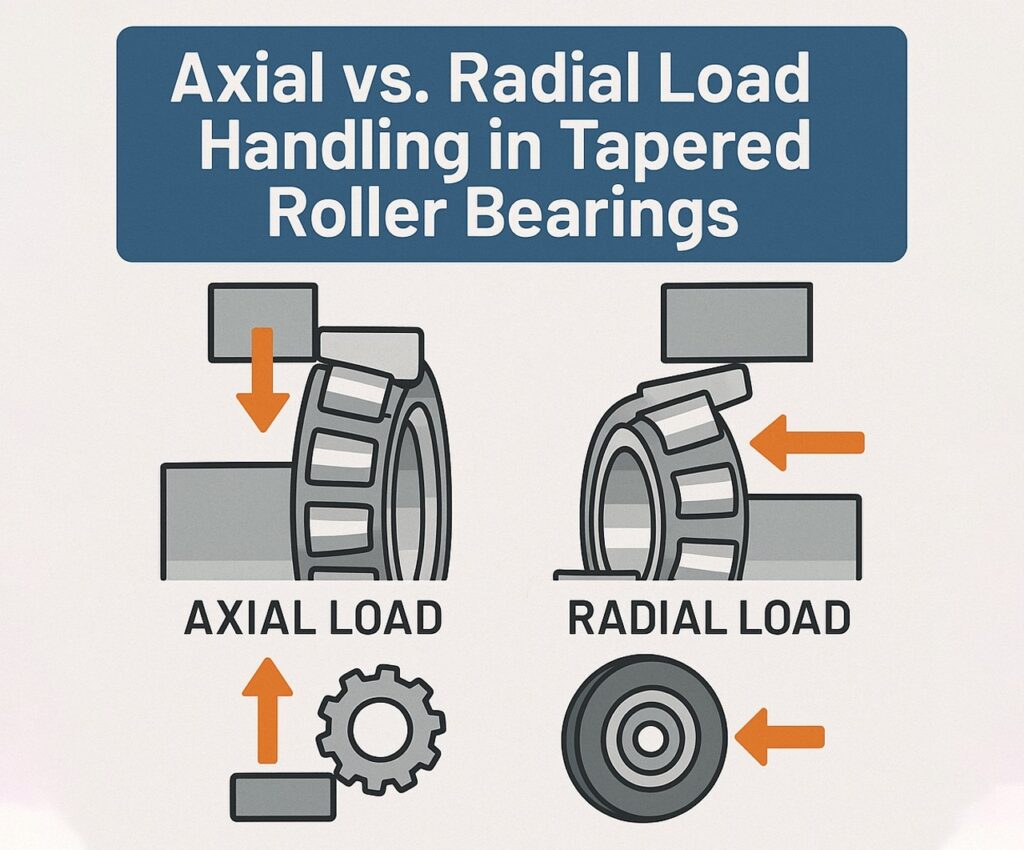Understanding how different bearings handle axial and radial loads is key to building machines that last. Whether you’re designing high-performance equipment or upgrading an existing system, knowing the load capabilities of a roller bearing tapered, tapered roller thrust bearing, or a miniature tapered roller bearing can make or break your design. These three types each offer unique advantages in load handling, especially when you’re dealing with both axial (thrust) and radial forces simultaneously.
In this article, we’ll dive into the differences between axial and radial load handling in tapered roller bearings, explore how each type functions in real-world applications, and offer practical tips to choose the right configuration. Know More
What Is a Tapered Roller Bearing?
At its core, a roller bearing tapered is designed to manage high loads with minimal friction. Unlike ball bearings, which use spherical balls, these bearings use tapered rollers positioned between an inner and outer raceway. The taper allows them to manage both radial and axial loads more effectively.
In simple terms:
- Radial loads act perpendicular to the shaft.
- Axial loads act parallel to the shaft (along the axis).
A roller bearing tapered excels at balancing these forces thanks to its unique geometry.
Axial Load Handling in Tapered Bearings
Axial loads are common in gearboxes, wheels, and rotating machinery. This is where a tapered roller thrust bearing stands out. Its design prioritizes thrust load capacity, making it ideal for applications where axial force is dominant.
Key Features:
- Larger contact area between rollers and raceways.
- Alignment designed to channel force along the bearing’s axis.
- Reduced stress concentration under heavy thrust.
Where It Shines:
- Automotive differentials and transmissions
- Heavy-duty construction equipment
- Vertical shafts and turbines
The tapered roller thrust bearing is engineered specifically to carry axial loads without deforming or overheating, ensuring longer service life and better energy efficiency.
Radial Load Handling in Tapered Bearings
While tapered bearings are great at axial load handling, they’re just as effective under radial stress. The taper angle plays a critical role in defining how much radial load a bearing can support.
In a roller bearing tapered, as the taper angle increases, the axial load capacity rises—but radial capacity can slightly reduce. Designers must strike the right balance.
Applications:
- Wheel hubs (cars and trucks)
- Conveyor pulleys
- Mining machinery
Bearings here typically support both load types, making the tapered geometry ideal. If your machine experiences shock or vibration, tapered rollers outperform ball designs every time.
The Role of the Taper Angle
One of the smartest design features of any roller bearing tapered is the taper angle. This angle determines the bearing’s “load share” between radial and axial forces.
- Shallow angle (10–15°): Better for radial loads.
- Steeper angle (20–30°): Optimized for axial loads.
By adjusting this, manufacturers can tailor the bearing to a specific application, creating a perfect balance between strength and efficiency.
Why Size Matters: Miniature Tapered Roller Bearings
Size doesn’t limit strength, especially when it comes to a miniature tapered roller bearing. These compact yet powerful components bring the same dual load-handling capability to space-constrained applications.
Typical Uses:
- Precision instruments
- Aerospace mechanisms
- Robotics and automation
- Medical devices
Despite their size, a miniature tapered roller bearing provides high load ratings and precise rotational performance. This is especially useful in lightweight devices where every gram matters but strength can’t be compromised.
Comparative Load Analysis: Axial vs. Radial
Let’s compare how different bearings stack up under load:
| Bearing Type | Axial Load Capacity | Radial Load Capacity | Common Application |
| Ball Bearing | Low to Medium | Medium | Electric motors |
| Cylindrical Roller | Very Low | High | Gearboxes |
| Tapered Roller | High | High | Vehicles, turbines |
It’s clear that the roller bearing tapered design stands out in combined-load environments. That’s why it’s the standard for critical load-bearing applications across multiple industries.
Common Failures & How to Prevent Them
Even the best tapered roller thrust bearing or miniature tapered roller bearing can fail if not applied correctly. Here’s what to avoid:
1. Improper Preload
Tapered bearings often need a set preload. Too loose and they rattle; too tight and they overheat. Always follow manufacturer guidelines.
2. Misalignment
Shaft or housing misalignment causes uneven load distribution, leading to premature wear. Use proper mounting tools and tolerances.
3. Contamination
Dust, dirt, or moisture breaks down lubrication and accelerates wear. Use sealed or shielded bearings in exposed environments.
4. Lubrication Errors
The wrong grease or oil can cause friction spikes or bearing lockup. Match lubrication to the application’s temperature, speed, and load.
Selecting the Right Tapered Bearing
To pick the best bearing—whether it’s a roller bearing tapered, tapered roller thrust bearing, or miniature tapered roller bearing—you need to know:
- Load direction: Pure radial? Pure axial? Or mixed?
- Speed requirements: Higher speeds need better lubrication and heat resistance.
- Operating environment: Will it face water, chemicals, or extreme temperatures?
- Space constraints: This decides whether you go for standard or miniature tapered roller bearing variants.
Collaborate with a trusted supplier who understands application-specific requirements and offers engineering support.
Innovations to Watch
Manufacturers are pushing tapered bearings into the future. Keep an eye out for:
- Smart bearings with sensors to monitor temperature, load, and wear
- Hybrid materials using ceramics and advanced polymers for higher speed and longer life
- Eco-lubricated designs that reduce the need for manual greasing
Companies producing roller bearing tapered products are now focusing on sustainability, precision manufacturing, and digital integration for predictive maintenance.
Final Thoughts
In summary, understanding the nuances between axial and radial load handling can dramatically improve your machinery’s efficiency and lifespan. A roller bearing tapered gives you powerful support for both load types. A tapered roller thrust bearing focuses more on axial stability, and a miniature tapered roller bearing brings that strength into the smallest machines.
No matter your application—industrial, automotive, medical, or aerospace—there’s a tapered bearing solution ready to deliver durability, precision, and performance.

